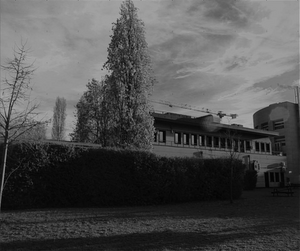Information
- Publication Type: Journal Paper (without talk)
- Workgroup(s)/Project(s):
- Date: June 2023
- Article Number: 5370
- DOI: 10.3390/s23125370
- ISSN: 1424-8220
- Journal: Sensors
- Number: 12
- Open Access: yes
- Pages: 23
- Volume: 23
- Publisher: MDPI
- Keywords: PFA camera, deep learning, high dynamic range imaging, polarimetric imaging
Abstract
In computational photography, high dynamic range (HDR) imaging refers to the family of techniques used to recover a wider range of intensity values compared to the limited range provided by standard sensors. Classical techniques consist of acquiring a scene-varying exposure to compensate for saturated and underexposed regions, followed by a non-linear compression of intensity values called tone mapping. Recently, there has been a growing interest in estimating HDR images from a single exposure. Some methods exploit data-driven models trained to estimate values outside the camera’s visible intensity levels. Others make use of polarimetric cameras to reconstruct HDR information without exposure bracketing. In this paper, we present a novel HDR reconstruction method that employs a single PFA (polarimetric filter array) camera with an additional external polarizer to increase the scene’s dynamic range across the acquired channels and to mimic different exposures. Our contribution consists of a pipeline that effectively combines standard HDR algorithms based on bracketing and data-driven solutions designed to work with polarimetric images. In this regard, we present a novel CNN (convolutional neural network) model that exploits the underlying mosaiced pattern of the PFA in combination with the external polarizer to estimate the original scene properties, and a second model designed to further improve the final tone mapping step. The combination of such techniques enables us to take advantage of the light attenuation given by the filters while producing an accurate reconstruction. We present an extensive experimental section in which we validate the proposed method on both synthetic and real-world datasets specifically acquired for the task. Quantitative and qualitative results show the effectiveness of the approach when compared to state-of-the-art methods. In particular, our technique exhibits a PSNR (peak signal-to-noise ratio) on the whole test set equal to 23 dB, which is 18% better with respect to the second-best alternative.Additional Files and Images
Weblinks
BibTeX
@article{pistellato-2023-elp,
title = "Exploiting Light Polarization for Deep HDR Imaging from a
Single Exposure",
author = "Mara Pistellato and Tehreem Fatima and Michael Wimmer",
year = "2023",
abstract = "In computational photography, high dynamic range (HDR)
imaging refers to the family of techniques used to recover a
wider range of intensity values compared to the limited
range provided by standard sensors. Classical techniques
consist of acquiring a scene-varying exposure to compensate
for saturated and underexposed regions, followed by a
non-linear compression of intensity values called tone
mapping. Recently, there has been a growing interest in
estimating HDR images from a single exposure. Some methods
exploit data-driven models trained to estimate values
outside the camera’s visible intensity levels. Others make
use of polarimetric cameras to reconstruct HDR information
without exposure bracketing. In this paper, we present a
novel HDR reconstruction method that employs a single PFA
(polarimetric filter array) camera with an additional
external polarizer to increase the scene’s dynamic range
across the acquired channels and to mimic different
exposures. Our contribution consists of a pipeline that
effectively combines standard HDR algorithms based on
bracketing and data-driven solutions designed to work with
polarimetric images. In this regard, we present a novel CNN
(convolutional neural network) model that exploits the
underlying mosaiced pattern of the PFA in combination with
the external polarizer to estimate the original scene
properties, and a second model designed to further improve
the final tone mapping step. The combination of such
techniques enables us to take advantage of the light
attenuation given by the filters while producing an accurate
reconstruction. We present an extensive experimental section
in which we validate the proposed method on both synthetic
and real-world datasets specifically acquired for the task.
Quantitative and qualitative results show the effectiveness
of the approach when compared to state-of-the-art methods.
In particular, our technique exhibits a PSNR (peak
signal-to-noise ratio) on the whole test set equal to 23 dB,
which is 18% better with respect to the second-best
alternative.",
month = jun,
articleno = "5370",
doi = "10.3390/s23125370",
issn = "1424-8220",
journal = "Sensors",
number = "12",
pages = "23",
volume = "23",
publisher = "MDPI",
keywords = "PFA camera, deep learning, high dynamic range imaging,
polarimetric imaging",
URL = "https://www.cg.tuwien.ac.at/research/publications/2023/pistellato-2023-elp/",
}


 paper
paper
